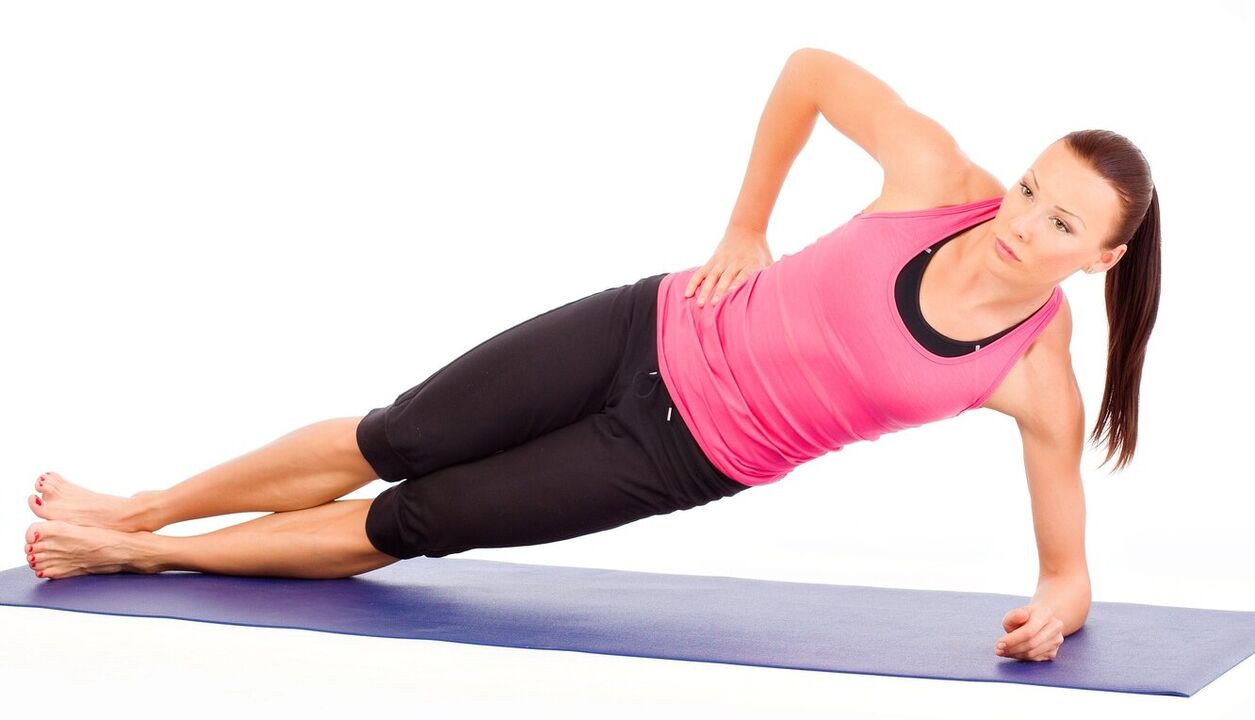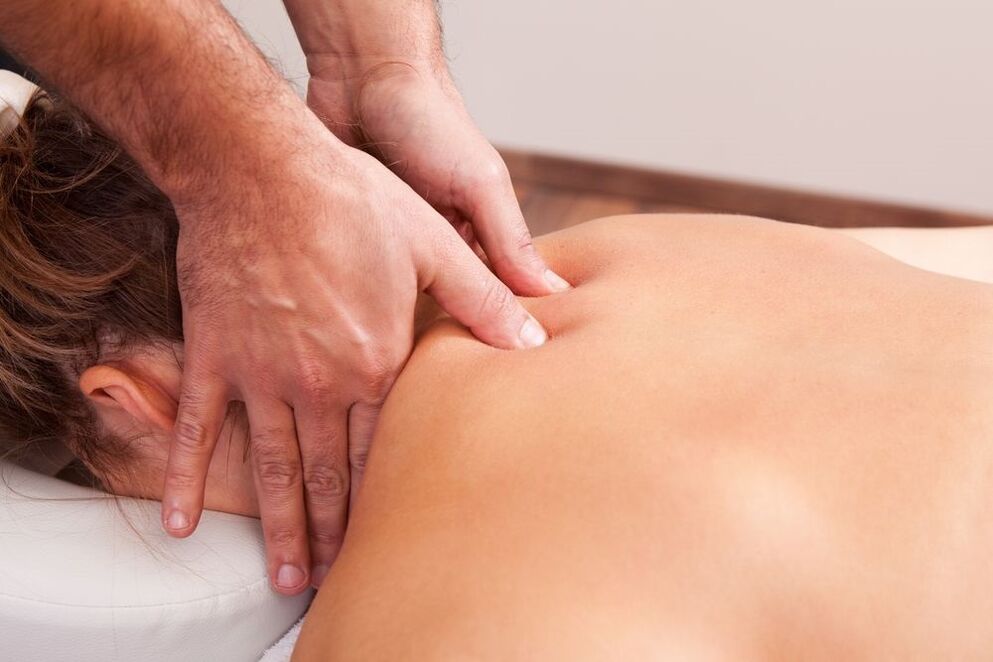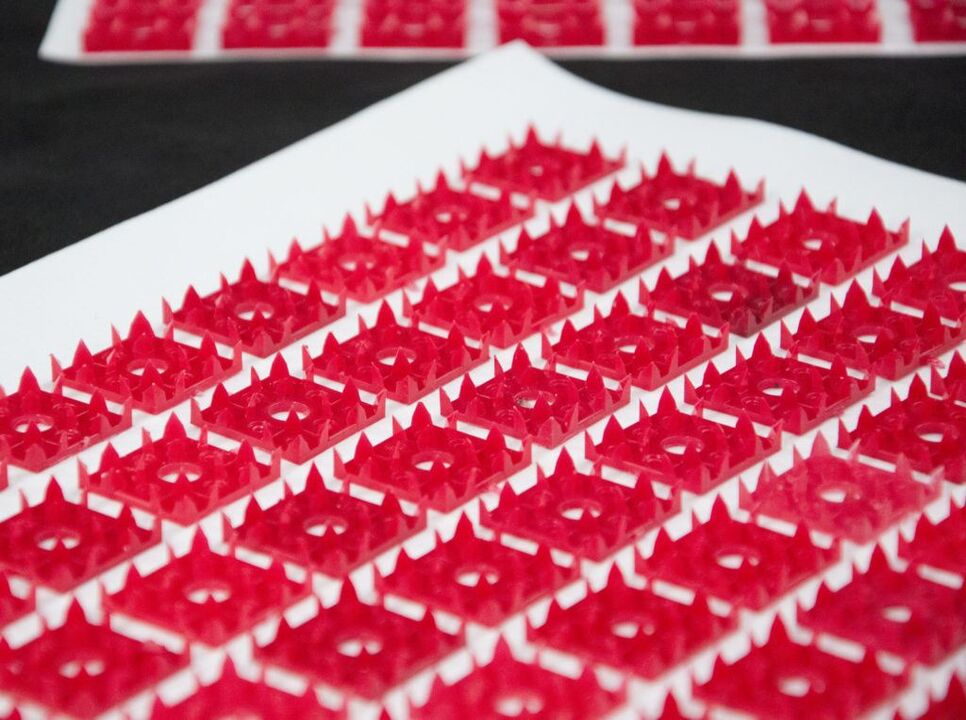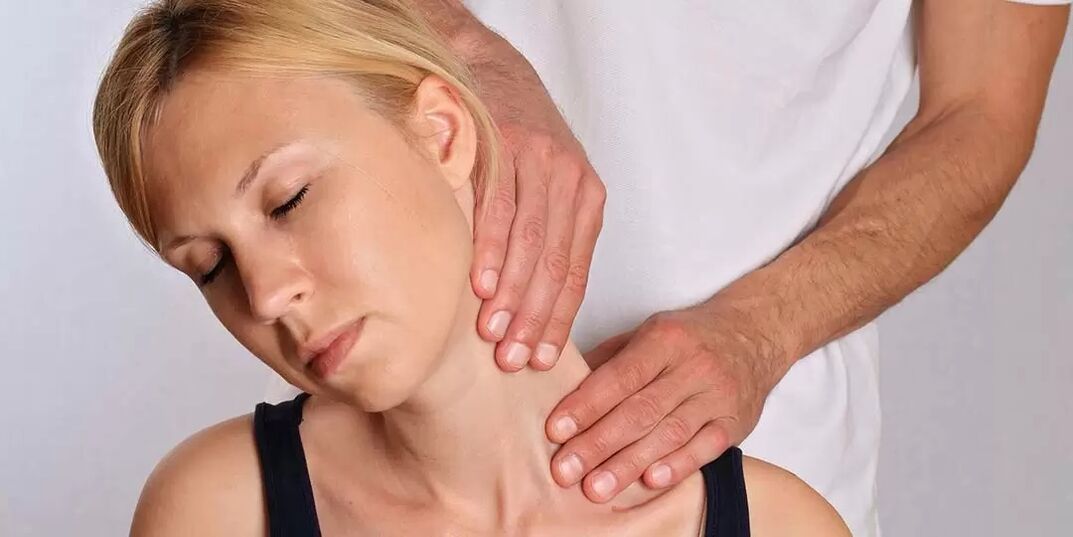
Cervical osteochondrosis is a type of dystrophic change in the intervertebral disc in the neck.
Not only the disc itself is negatively affected, but also the vertebrae, soft tissues and cartilage. The main feature of the cervical area is the fact that its vertebrae do not have the most reliable structure compared to other areas, which makes this area very vulnerable. The vertebrae are located close to each other, as well as the arteries that supply the human brain.
If there is a displacement of the vertebrae, then there is a high probability of compression of the nerve bundles and arteries, which will inevitably lead to the occurrence of a hernia between the vertebrae and the protrusion, i. e. changes in the structure of the vertebral disc.
What is this?
Osteochondrosis of the cervical spine (Osteohondroz) is a degenerative-dystrophic lesion of the intervertebral disc, as a result of which the disc itself, vertebrae and joints of the cervical spine are damaged, and a decrease in the height of the intervertebral disc is observed. . The disease develops if left untreated and can cause headaches, poor circulation and even hernias. Like osteoporosis, the disease occurs due to a violation of mineral metabolism, as a result of which the bones and joints become weaker.
Why does osteochondrosis appear?
Although traditional medicine considers degenerative changes in the intervertebral discs of the cervical spine as a disease, from the point of view of osteopathy, this is only a manifestation of a deeper disorder in the body.
Therefore, the real causes of cervical osteochondrosis are:
- Muscle cramp. . . Spasmodic reactions of the muscles of the back, chest, press can lead to the fact that certain parts of the body are very tense. As a result, the general balance position of the body is disturbed, causing changes in the position of the spine. Defects can affect the cervical area or other parts of the spine, causing osteochondrosis in the thoracic, cervical and lumbar regions.
- Poor posture. . . Scoliosis, squats, round buttocks, kyphosis and other postural disorders, although minor, cause serious imbalances in the spine. As a result, the load on the intervertebral disc is unevenly distributed, which gives rise to deformation and increased wear. The spine begins to accumulate, causing a violation of neural processes, cervical osteochondrosis develops rapidly. Postural disorders caused by changes in the natural position of the ribs have similar consequences.
- Disorders of innervation. . . Decreased nerve root sensitivity leads to pathological changes in its structure, as a result of which displacement and deformation of the cervical vertebra remains unnoticed by the patient. After all, pain is not present because of sensitivity disorders.
- Diseases of internal organs. . . Improper position of internal organs, their displacement and decline due to various dysfunctions lead to a violation of the general balance in the body. As a result, this dramatically affects the position of the spinal column - cervix, lumbar vertebrae displaced and deformed, leading to the corresponding type of osteochondrosis.
- Violation of blood supply. . . Since the vertebral discs have no direct contact with the circulatory system, they receive nutrients from the surrounding tissues. Violation of blood supply to the cervical spine leads to the fact that the discs do not receive enough fluid for rehydration (restoration of form due to moisture absorption), renewal of cartilage tissue. As a result, their wear is accelerated, there is a decrease in the distance between the vertebrae of the cervical spine, which leads to osteochondrosis.
ranking
The attending physician should determine the stage of development of cervical osteochondrosis, based on history, as well as examination of the patient. There are only four degrees:
- First degree. . . The disease is in the bud, the patient has a slight pain in the neck, which can become more intense if the person begins to turn his head.
- second degree. . . Patients may complain of very strong pain in the cervical spine, which can be localized in the upper part of the leg. The clinical picture shows that at the stage of development of the disease, pinching of the nerve bundles is observed, which causes severe pain. Headaches, weakness and general lethargy were also observed.
- third degree. . . The pain becomes almost non -stop, also radiating to the shoulders or arms. Some patients are diagnosed with a herniated disc, which leads to loss of sensation in the upper limbs. On examination by a doctor, there is a significant decrease in the mobility of the cervical spine, as well as pain on palpation.
- Fourth grade. . . At this stage of the disease, the intervertebral disc is almost completely destroyed. In its place, connective tissue appears, which leads to a deterioration of the patient’s condition. He began to feel more pain, noise in his head, as well as a weak orientation in space. This indicates that the arteries are clogged, which interferes with the brain’s natural nutrition.
The first signs
How does osteochondrosis of the cervical spine manifest itself:
- radicular syndrome - against the background of compression of nerve endings, pain occurs, which spreads from the neck to the shoulder blades, forearms, covering the anterior wall of the chest;
- muscle weakness in the arms, significant swelling of the neck;
- when moving the head, characteristic irritation is heard;
- weakness, chronic fatigue, decreased blood pressure;
- lack of coordination, often dizziness, attacks accompanied by nausea, vomiting;
- visual and hearing impairment, noise, ringing in the ears;
- numbness of limbs, tongue;
- frequent migraines;
- in women aged 45-65 years, during sleep, pain, numbness, tingling in the upper legs appear, attacks can be repeated several times each night.
Symptoms of osteochondrosis of the cervical spine
Important symptoms of cervical osteochondrosis are dizziness, headache, blood pressure spikes.
Diagnosis of the disease is difficult, pain sometimes does not appear, and symptoms are extinguished, moreover, uncontrolled use of analgesics mask the symptoms of the disease. A patient who does not feel pain considers himself healthy, and this continues until the development of the process is irreversible in the neck joint tissue.
Headache with cervical osteochondrosis
The most common causes of headaches in the pathology we describe:
- Brain vascular spasm;
- Nerve roots pinched;
- Reflex increase in intracranial pressure.
Feelings like pain can be paroxysmal, persistent, throbbing and dull.
Dizziness with cervical osteochondrosis
Dizziness can be caused by:
- Inflammation of the middle or inner ear;
- Brain vascular spasm;
- Disorders in the transmission of nerve impulses;
- Problems with the vestibular apparatus;
- Diseases of the cardiovascular system.
There are no clear criteria for dizziness in osteochondrosis. However, there are systemic and non -systemic vertigo, they have a clear difference.
It is recommended to know the difference between systemic and non -systemic dizziness, this will help determine independently the cause of the unusual condition:
- Systemic dizziness is the sensation of circular movement of objects or bodies around, which is the result of disturbances in the vestibular apparatus, visual analyzers and receptors on the joints, muscles and epidermis (osteochondrosis of various etiologies);
- Non -systemic dizziness is a feeling of dizziness, a feeling of being stunned, not sure of being in an upright position. In the case of non -systemic dizziness, the sensation of circular rotation is not present, and this is an important difference between the signs being compared.
A person who feels dizzy of one of these types should be examined by an experienced physician, first of all, by a neurologist or (if there is a suspicion of ear and nasopharyngeal disease) by an otolaryngologist.
The reason for emergency hospitalization, not associated with osteochondrosis of the cervical spine, is the patient's identification (except dizziness) of symptoms such as:
- Facial muscle paralysis and numbness in the shoulder girdle;
- Severe headache against the background of deteriorating health;
- Movement coordination disorders;
- Loss or extinction of consciousness.
Blood pressure in cervical osteochondrosis
The connection of cervical osteochondrosis with blood pressure surges has long been established. The cervical vertebrae have important nerve endings and blood vessels.
The hallmark of high blood pressure in cervical osteochondrosis is a combination of the following symptoms:
- Headache;
- Pain in limbs and chest;
- Reduces sensitivity in the neck area;
- Occurrence of pressure surges after stress, muscle tension, prolonged uncomfortable posture and other similar situations.
These signs should be taken into account when distinguishing hypertension of various origins.
A sudden jump in blood pressure and a rapid deterioration in health are the basis for seeking emergency medical help.
Osteochondrosis syndrome
Osteochondrosis consists of the following syndromes:
- Vertebral. . . It is also called vertebral, which indicates that bone and cartilage tissue are involved in pathological processes. This leads to the formation of symptoms such as: limitation of motor activity of the neck, pain when rotating it, radiological changes in the image of the cervical spine. It is the simultaneous appearance of these signs that is vertebral syndrome. A similar set of clinical signs is observed in myositis (pathology of muscle tissue), and painful movements are companions of many other pathologies.
- Heart syndrome. . . It is indicated by a burning sensation in the chest area, the appearance of shortness of breath. The person felt his heart beating fast, became tired and irritable. This picture is also typical for cardiological pathology, for example, for angina pectoris, coronary syndrome, heart attack. An accurate conclusion about the cause of the symptoms can be made after the patient undergoes an ECG.
- Radicular Syndrome. . . The cervical region invades 8 pairs of nerves, each of which has a root - the place where the nerve exits from the vertebrae. When they are involved in osteochondrosis, patients feel a decrease in sensitivity or vice versa - severe pain. There may be numbness in the occiput, whether it is painful, decreased sensitivity of the tongue, behind the ears, pain in the supraclavicular area. Sometimes there is a violation of swallowing, movement of the upper limb girdle, numbness of the fingers.
Diagnostics
If there are obvious signs of cervical osteochondrosis on the face, then the doctor prescribes certain methods to ensure that the diagnosis is correct:
- X-ray of the cervical spine. This method is advised in the early stages of the disease, but may not be useful in advanced form.
- CT (computed tomography). It allows you to see structural changes in the vertebrae, but using this method it is impossible to determine the size of the hernia between the vertebrae.
- MRI. It is considered the most effective diagnostic method in determining cervical osteochondrosis. It is possible to determine the size of the hernia between the discs, as well as its stage of development.
- Your doctor may also order a duplex scan to determine if your arteries are not working properly.
Complications of the disease
What are the dangers of cervical osteochondrosis:
- frequent migraine attacks;
- heart rhythm disorders, atherosclerosis;
- protrusion, intervertebral hernia, growth of vertebral bones;
- serious pathology of the brain;
- narrowing of the lumen of the vertebral arteries, leading to the development of VSD, cerebral hypertension, disability;
- spinal stroke.
First aid at home with exacerbation of osteochondrosis
For severe pain, painkillers can be used. If analgesics do not provide relief, NSAIDs can be taken.
Often used is "disturbing" means, for example, Pepper Plaster, which does not heal, but only heats the inflamed area and distracts from the pain. If edema in the area of inflammation, the patient can drink an infusion of herbs or diuretics for 3-4 days. Can osteochondrosis be cured by such a method? These measures are only temporary; to treat the cause, you need to see a doctor.
How to treat osteochondrosis of the cervical spine?
In the early stages of development, osteochondrosis can be cured without medication, it is enough to review the diet, daily regimen, and regularly do a set of special exercises. With advanced forms of the disease, effective treatment is only possible with the use of various medications that help stop degenerative changes in the vertebrae.
The complex of therapeutic measures must include physiotherapy - electrophoresis with drugs, ultrasound, magnetotherapy, laser therapy. This method helps to relieve pain, inflammation, swelling of tissues, improve metabolic processes and blood circulation.
Drug treatment
The main methods of treating osteochondrosis of the cervical spine are drug treatment, physiotherapy, massage of the cervical collar zone, therapeutic training for cervical osteochondrosis is very effective. The main groups of drugs used for this disease include:
| name | Principles of operation |
| Nonsteroidal anti-inflammatory drugs (NSAIDs). | They reduce pain, help relieve aseptic inflammation and edema of damaged nerve roots. |
| Drugs that improve the rheological properties of blood and blood flow. | Improves nutrition of damaged nerve roots and increases blood flow to the brain. |
| vitamin B. | Improves metabolic processes in nerve tissue. |
| Relax your muscles. | These are medications that relieve muscle cramps. |
| Chondroprotectors. These are glucosamine and chondroitin. | These are drugs that restore cartilage tissue, including in damaged intervertebral discs. |
When taking pills for osteochondrosis, it should be borne in mind that the significant effect of drug treatment with pills is only if you combine them with other methods, including exercise. It should also be noted that the attending physician must prescribe how to treat the disease based on its stage and other symptoms.
Many doctors consider the treatment of cervical osteochondrosis with injections to be effective, as this allows for faster action on the nerve endings and causes minimal side effects. At the same time, vitamins are best taken in pill form, as there is no difference for assimilation, but injections can be painful.
Injections used for treatment:
- intramuscular injection causes general strengthening and anti-inflammatory effect;
- the blockage is injected directly into the affected area, which leads to a rapid effect.
Ointments and gels for external use
This is the most accessible group of medications for home use. They are divided into inflammation relief, warming and pain relief.
With cervical osteochondrosis, not all ointments are effective, in addition, due to their availability, they are sometimes used unreasonably and without taking into account the peculiarities of the pathogenesis. Before using any medication, you must be examined by a doctor.
Exercise therapy
Physiotherapy for cervical osteochondrosis should be performed without acute exacerbation. The greatest efficiency of this technique is during the recovery period. There should be no discomfort and pain during the implementation of the complex!
| Exercise number 1 | Lie on your stomach, place your hands on the floor, lift your head and body, your back should be straight. Remain in this position for 1-2 minutes. Slowly lower yourself to the floor. Repeat 2-3 times. |
| Exercise number 2 | Lie on your stomach, stretch your arms along your body, turn your head to the left, try to touch the floor with your ears, then turn your head to the right. Repeat 6-7 times in each direction. |
| Exercise number 3 | In a sitting position, while inhaling, bend forward, and try to touch your chest with your head, then exhale, bend backwards and tilt your head backwards. Repeat 10-15 times. |
| Exercise number 4 | While sitting, place the palms on the forehead, press with the palms on the forehead and the forehead on the palms. Continue this exercise for 30 seconds. Repeat 2-3 times. |
| Exercise number 5 | Turn your head slowly in one direction, then in the other. 10 rotations in each direction. Watch out for dizziness. When it appears, training stops. |

Massage for cervical osteochondrosis
Massage must be done carefully, without using energy. Inexperienced and unprofessional sequences can end in failure. Movement should extend to the cervical area, collar area and back. Massage is performed in a prone position, in extreme cases, in a sitting position.
The technique is based on the following techniques:
- caressing. Effects on the surface layer of the skin. With the palms of the hands or fingertips from the head down to the upper third of the middle of the back. Rubbing from the base of the neck can also be in a zigzag pattern;
- Squeezing. Effects on the inner layer of the skin in the upper third of the back. Fingers (thumb and forefinger) across the neck make movements to grip the skin, such as squeezing. This is done carefully, tissues close to the vertebrae are not involved;
- Triturasi. The purpose of the procedure is to warm the skin and increase blood flow in the neck area. This is done very carefully. Effects on the spinous process of the vertebrae are not allowed. Rubbing can be replaced with movements reminiscent of sawing, or circular rubbing;
- kneading. It is of limited importance, as it affects very deep tissues, which can exacerbate the pathology.
Self -massage for cervical osteochondrosis is performed while sitting in a comfortable position. The method of rubbing, rubbing round the neck or shoulders is used. It is advisable to combine the method of self -massage with rubbing in various ointments that increase blood flow and relieve pain in the kneaded area.

Physiotherapy
Along with taking the medication, the patient needs to undergo a physiotherapy procedure. They increase the effectiveness of medications and promote the recovery of joints and intervertebral discs.
- Electrophoresis - anesthetic drug ions penetrate into the sore spot as a result of the action of an electric current.
- Laser therapy - has anti -inflammatory properties, guarantees an increase in blood circulation, by means of light exposure.
- Magnetic therapy - relieves tissue swelling, has an analgesic effect.
- Ultrasound - there is an increase in metabolic processes, relieves pain, relieves inflammation of the damaged area.
Some procedures are used in the form of physiotherapy. The doctor prescribes treatment, depending on the symptoms and the absence of contraindications.

Restoration of the people
Alternative treatments must be used in addition to drug therapy and physical education, unconventional methods will not help to completely get rid of the disease.
What to do with cervical osteochondrosis at home:
- Pour boiling water over fresh carrot leaves, cool slightly, attach the inside to the neck, cover with a thin natural cloth. This procedure is performed before bedtime, leave the compress overnight.
- Grate raw potatoes on a fine grater, mix in equal proportions with warm melted honey. Use the mixture to compress, the procedure should be carried out 1-2 times a week.
- Mix raw eggs with 100 ml of sunflower oil, 20 ml of vinegar and 20 g of flour, remove the mixture in a dark place for 48 hours, remove the film from the surface. Means to rub the inflamed area before bedtime, store in the refrigerator.
- In May, collect pine buds up to 2 cm long, cut into thin slices, fold into a dark glass container. For 1 part raw material, take 2 parts sugar, remove the drug in a dark place for 2 weeks. Drink 5 ml of the mixture three times a day, do not swallow immediately, hold in your mouth for 2-3 minutes. Course duration-15-20 days, repeat 2-3 times a year.
- Grind 150 g of peeled garlic and 400 g of cranberries, put the mixture in a glass container, add 800 ml of honey after 24 hours, mix. Take 5 ml of the drug three times daily before meals.
To overcome severe pain, remove excess salt with cabbage leaves rubbed with honey, apply a compress on the neck with a warm scarf, leave overnight.
Applicator
The use of applicators is one of the methods of therapy for diseases of the spine, including osteochondrosis.
The effect of the device on the cervical spine normalizes metabolic processes, relieves pain, improves muscle tone, improves blood circulation, improves the conductivity of nerve tissue, etc.

Manual therapy
Manual therapy is based on the principles of restoring motor function and mobility between vertebrae.
Initially, the manipulation consists in a light relaxing sequence, then the doctor uses more force, acting on the vertebrae by pressing and twisting the neck.

Surgery
The spine is the foundation of the entire human body. When diagnosing any pathology related to the spinal space, specialists strive to eliminate it therapeutically. Any surgery on the spine is life threatening.
With cervical osteochondrosis, surgical intervention is allowed under the following indications:
- intervertebral hernia, spondylolisthesis, spinal stenosis;
- lack of therapeutic results when exposed for more than six months;
- osteophyte formation.
Modern medicine offers many ways to perform surgery with minimal risk to the health and life of the patient.
Prophylaxis
Cervical osteochondrosis is a disease that develops, first of all, with an improper lifestyle. Accordingly, disease prevention is a healthy lifestyle.
It is possible to reduce the risk of developing SHO if:
- exclude provoking factors;
- exercise regularly;
- do not use strenuous physical activity;
- get rid of bad habits;
- try to be as little nervous as possible;
- eat right.
Adherence to preventative measures will help speed up the healing process and eliminate the possibility of recurrence. The elderly and those with hereditary predispositions are advised to adhere to prevention on an ongoing basis. Adherence to a diet, doing simple exercises will definitely bring positive results. It is also useful for doing yoga and swimming.



















